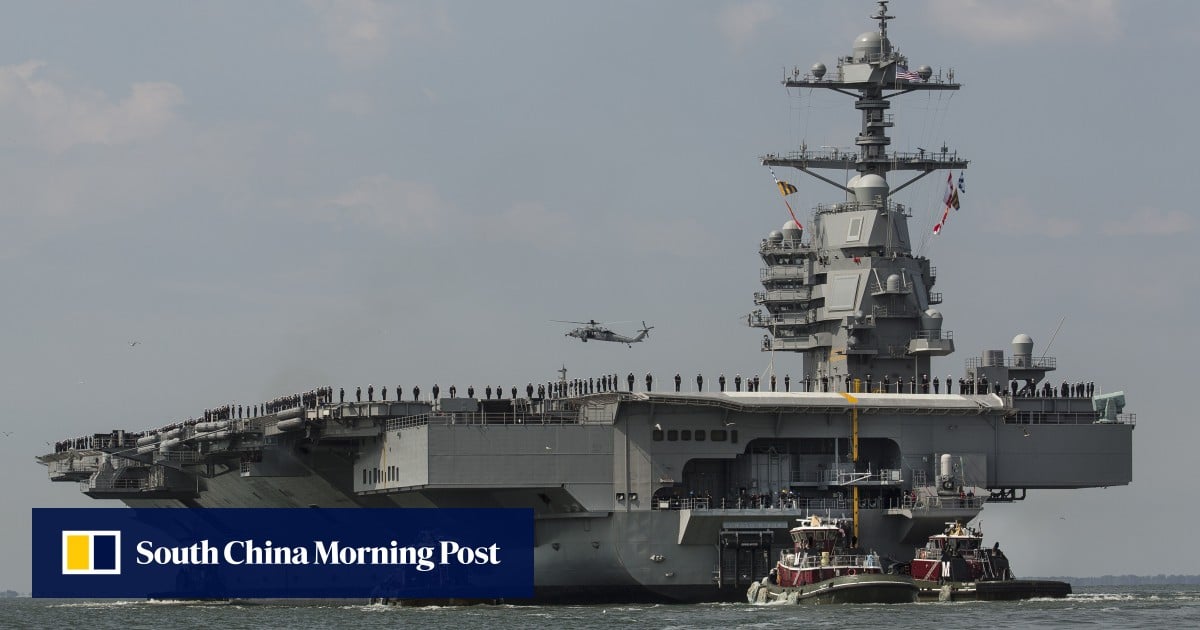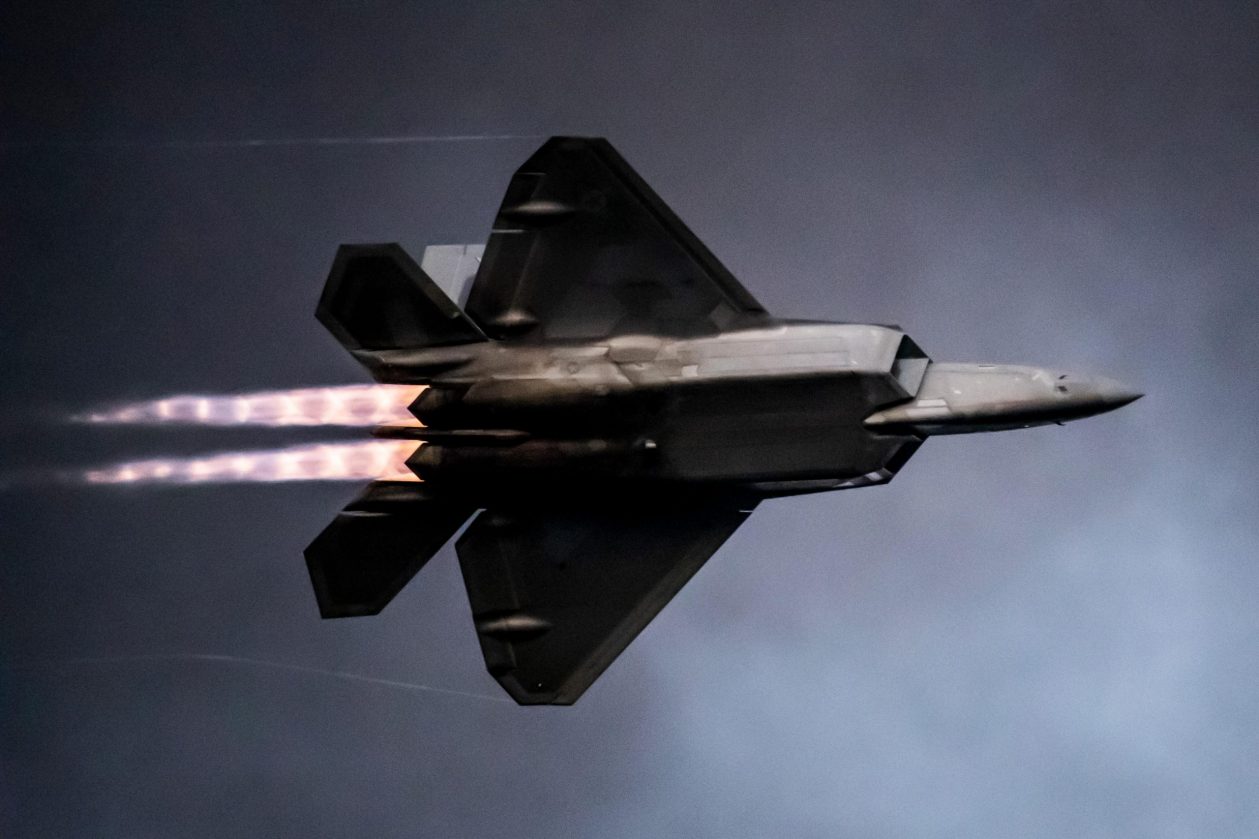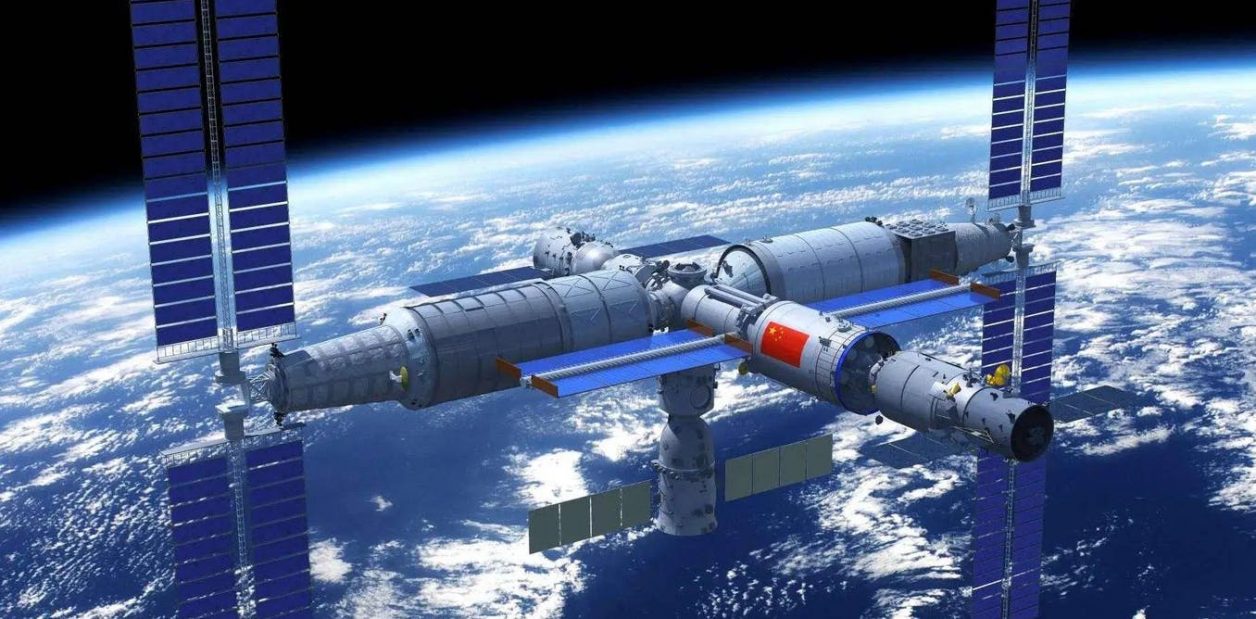beijingwalker
ELITE MEMBER

- Joined
- Nov 4, 2011
- Messages
- 65,191
- Reaction score
- -55
- Country
- Location
Chinese scientists war-game hypersonic strike on US carrier group in South China Sea
- Military planners conclude the Gerald R. Ford and its fleet could be destroyed ‘with certainty’ in rare published report
- The researchers said 24 hypersonic anti-ship missiles were used to sink the US Navy’s newest carrier and its group in 20 simulated battles
Published: 4:00pm, 23 May, 2023Hypersonic weapons could be “catastrophic” for the most potent aircraft carrier group in the US fleet, according to war game simulations run by a team of military planners in China.
Over 20 intense battles, Chinese forces sank the USS Gerald R. Ford carrier fleet with a volley of 24 hypersonic anti-ship missiles, in a simulation run on a mainstream war game software platform used by China’s military.
In the scenario, the US vessels are attacked after continuing to approach a China-claimed island in the South China Sea despite repeated warnings.
A paper detailing the war game was published in May by the Chinese-language Journal of Test and Measurement Technology. It is the first time the results of simulated hypersonic strikes against a US carrier group have been made public.
The researchers, led by Cao Hongsong from the North University of China, said almost every US surface vessel was shattered by the attack and eventually sank in the simulation.
The war games suggested the US carrier group – previously regarded as unsinkable by conventional weapons – could be “destroyed with certainty” by a relatively small number of hypersonic strikes, they said.

In the simulation, Chinese forces launched 24 hypersonic anti-ship missiles from six sites ranging from southern China to the Gobi desert. Illustration: North University of China
The team said two hypersonic anti-ship missile models with vastly different performances were unleashed in the simulation, with some launched from as far away as the Gobi Desert.
The Chinese military displayed “unusual prowess in their sophisticated launch strategy” which consisted of an intentionally complex three-wave attack meant to deceive and overcome the formidable defence systems of the US carrier group, the paper said.
Military planners use sophisticated war game simulations to evaluate various scenarios and develop strategies but they cannot be relied on over real-world testing and evaluation.
Some military experts caution that the real-world performance of these missiles may differ from what is predicted by simulations due to terrain, weather, and other unforeseeable factors.
It therefore remained critical for government leaders and the public to approach these simulations with caution and realism, the researchers said.
The US fleet in the war game was made up of six surface ships, chosen for their “unparalleled strength and advanced technology”.
The military planners selected vessels deemed the US Navy’s most superior – the CVN-78 Gerald R. Ford, accompanied by a CG56 Ticonderoga-class cruiser the San Jacinto, and four DDG-103 Arleigh Burke-class Flight IIA guided missile destroyers.
The Ford-class carrier, commissioned in July 2017, boasts exceptional technology and design advancements, according to the researchers. Features include a pioneering electromagnetic launch system and state-of-the-art radar and electronic warfare systems.
These sophisticated technologies detect incoming threats while multiple layers of armour and protective systems are designed to lessen the impact of missile attacks and other enemy firepower.
The strike group’s cruisers and destroyers were also equipped with advanced weapons and defensive measures, including radar systems that could detect incoming threats while simultaneously tracking multiple targets, the researchers said.
The war game’s parameters for the carrier group’s total number of air-defence missiles were set at 264, according to the research paper. These included the RIM-161E SM-3, an advanced missile devised to intercept ballistic missiles either in midcourse or terminal phase.
Notably, the SM-3 uses a kinetic warhead to obliterate a target by colliding with it at immense speed. While there is no record of it shooting down a hypersonic threat, the war game designers assumed its capability and incorporated it into the game.
The carrier group was also equipped with numerous soft defence weapons to combat missile attacks, including decoys, chaff, and flare dispensers.
Several constraints were placed on the Chinese military in the simulation, such as a lack of access to spy satellites stationed in space and a limited number of hypersonic missiles.
The underlying principle of the war game was to be “lenient with the enemy and strict with oneself”, Cao said.
The two models of anti-ship missiles used by the Chinese side in the simulation could cruise at high altitudes and reach a top speed of Mach 11, the paper said. According to Cao, both models are capable of sinking a carrier or large warship within two hits.
The research paper outlined the operational range of one model at 2,000km (1,240 miles) with an 80 per cent probability of hitting its intended target. The other Chinese model has double the range and a higher success rate of 90 per cent.
While the authenticity of the data used in the war games cannot be independently verified, some military experts suggested the information on the weapons’ performance appeared to be reliable.
“The accuracy of the data used in war game simulations is critical to their usefulness in evaluating potential scenarios,” said a Beijing-based aerospace defence industry engineer who asked not to be named because of the issue’s sensitivity.
“If the data about Chinese hypersonic missiles used in this war game simulation is far from reality, it could affect the quality of the simulation and lead to inaccurate conclusions.”
The researchers assumed that the cost of a missile is influenced by the materials, as well as the propulsion and guidance systems, used in its construction, suggesting the model with the greater range and accuracy may be relatively more expensive.
Employing lower quality missiles for certain parts of the attack would therefore maximise the Chinese weapons’ effectiveness, they said. For instance, the less reliable missiles could be used to lure SM-3s into the air or clear surviving ships after a formal attack.
During the simulation, the PLA used its sea-based surveillance network to detect and identify the US carrier group before firing eight of the less-reliable hypersonic missiles simultaneously from southern and central sites in China, the researchers said.
While some of the missiles were intercepted, the attack depleted the US fleet’s SM-3 munitions.
The PLA then launched eight of its more accurate hypersonic missiles from northern and western China, with four focused on the aircraft carrier while the others targeted the destroyers. Two of the less accurate missiles were fired at the cruiser, according to the paper.
“After the attack, four ships survived from the blue [US] team, with the destroyers having the most remaining, on average. The reason is that destroyers contain the most soft defence weapons, specially designed to defend against missile attacks,” it said.
Among soft defence weapons, electronic warfare systems play a crucial role in jamming enemy radar signals, a tactic that disrupts the missiles’ ability to lock onto their intended targets.
Other measures such as chaff and flare dispensers create confusion among incoming missiles, either through metallic or plastic strips or by emitting infrared flares that mimic the ship’s heat signature.
After confirming the status and location of the remaining targets, the PLA launched a “mop-up” operation with six of the relatively less accurate hypersonic missiles from the southern sites, the paper said.
After running the war game simulation 20 times to consider the various uncertainties that can occur in battle, Cao’s team determined the three-wave attack is capable of eliminating an average 5.6 out of six surface vessels – resulting in “total destruction” of the carrier group.
The researchers said the use of lure tactics would be critical to increasing the effectiveness of China’s hypersonic anti-ship missiles while reducing the number of SM-3 defence missiles available to the US fleet.
The team also said the use of patrol missions to identify and prioritise targets ahead of additional waves of missiles would allow the PLA to conserve is ammunition and ensure it only targeted viable threats.
The reasons for China’s release of the war game results remain unknown. Cao, an experienced researcher on virtual simulation technology and intelligent control technology for missiles and rockets, could not be reached for comment.
Her university, in Taiyuan, Shanxi province, has strong ties to the military with a notable number of its graduates working in the aerospace defence industry, according to publicly available information.
The Journal of Test and Measurement Technology, which published the paper, operates jointly with the university and the China Ordnance Society.
The Chinese government has repeatedly accused the US of stoking tensions in the region, especially at China’s doorstep, while Washington has stepped up its military presence in Asia to safeguard “freedom of navigation”.
The Beijing-based researcher said “greater transparency about China’s military capabilities and intentions could help to reduce misunderstandings and miscalculations on both sides, which could in turn help to reduce the risk of conflict”.
“Increasing transparency could also help build trust between China and other countries in the region, which could contribute to greater stability over the long term,” he said.

Chinese scientists war-game hypersonic strike on US carrier group
Military planners conclude the Gerald R. Ford and its fleet could be destroyed ‘with certainty’ in rare published report.

















